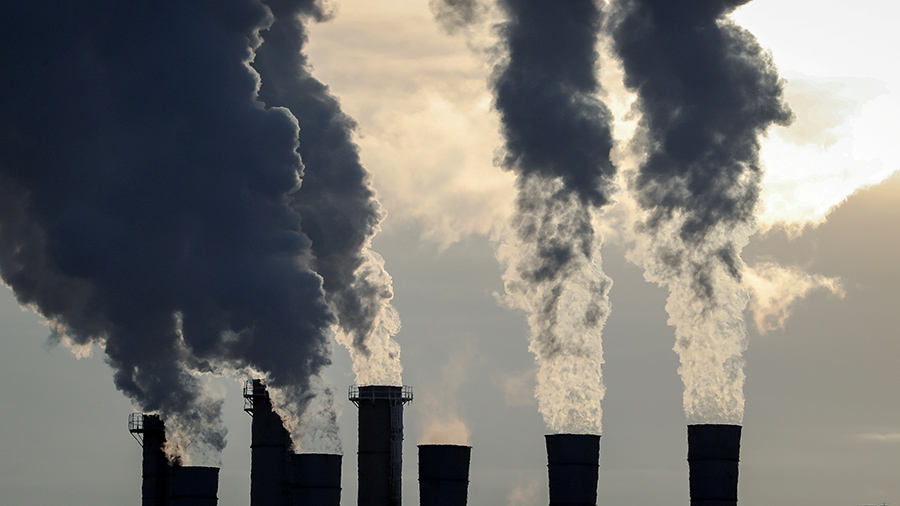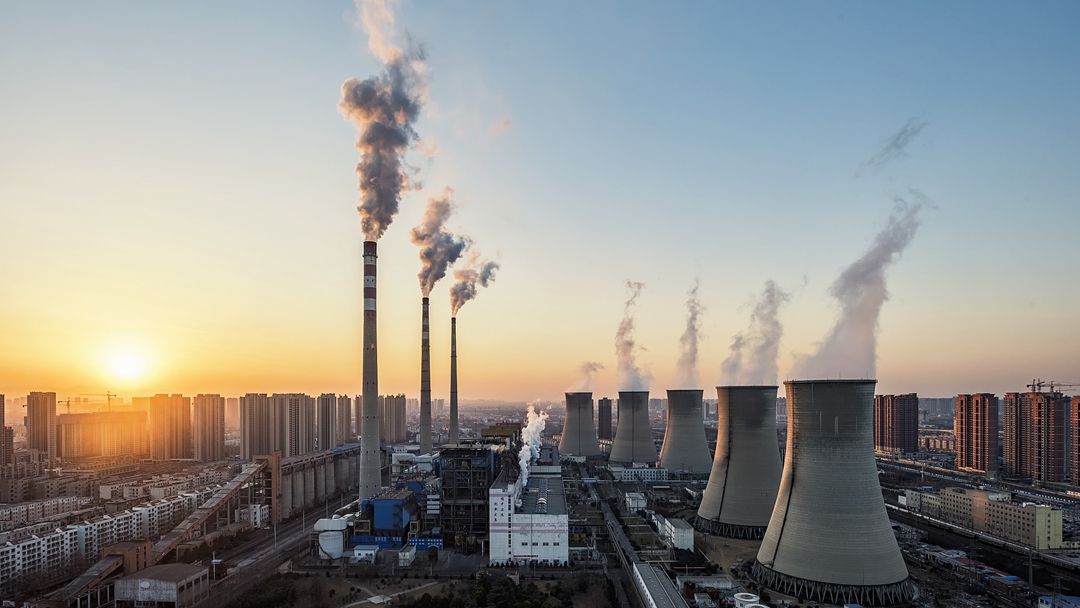
Carbon trading puts a price on a country or company's carbon emissions to encourage a reduction in greenhouse gases. /Reuters
Carbon trading puts a price on a country or company's carbon emissions to encourage a reduction in greenhouse gases. /Reuters
Editor's note: Djoomart Otorbaev, a former prime minister of the Kyrgyz Republic, is a distinguished professor at the Belt and Road School of Beijing Normal University and a member of Nizami Ganjavi International Center. This is the second piece of his series on carbon capture. The article reflects the author's views and not necessarily those of CGTN.
According to the Paris Agreement on climate change, to avoid catastrophic consequences for our planet, humanity needs to halve global emissions over the next decade and reach zero emissions by mid-century. As discussed in the previous article, many countries that are serious about combating climate change have already begun working on various innovative technologies for carbon capture and storage (CCS). Those technologies can reduce carbon dioxide emissions in the most harmful industrial sectors, such as burning coal, oil and gas, electricity generation, and hydrogen production, and reduce their concentration by extracting gas from the atmosphere and burying it underground or underwater.
To make progress in the CCS processes, one must complete a few essential tasks. First, to create an economic environment for investment either through direct incentives (grants, tax breaks, green bonds) or by determining the cost of emission reductions (emission standards, caps, and trade) to provide infrastructure for carbon transportation and storage and to develop a regulatory framework for new technologies.
Governments can and should stimulate low-carbon investment flows by introducing higher carbon costs that reflect pollution levels. There are different ways to establish the price of carbon. For example, in the U.S., the most progressive CCS incentive became tax breaks, encouraging capture and permanent carbon storage. Other measures include emission control systems, carbon trading, or additional carbon taxes.
In that area, the High-Level Commission on Carbon Pricing recommended a carbon price of $40-80 a ton by 2020 to drive a change consistent with the Paris Agreement. The International Monetary Fund recently proposed bringing the carbon price to $75 a ton by 2030, up from today's global average of $2 a ton. According to the International Energy Agency (IEA), it will be possible to capture and store more than 450 million tons of carbon dioxide at a carbon cost of $40 per ton. Most importantly, according to the Global Commission on the Economy and Climate, investments in the energy transition can support economic growth by about $26 trillion and create more than 65 million jobs by 2030 compared with business as usual.
According to the IEA, total energy investment totaled more than $1.8 trillion in 2019, falling about 20 percent in 2020 due to the impact of the coronavirus pandemic. With that, investments in renewable energy and energy efficiency have also declined. But according to the Global CCS Institute, total carbon capture and storage capacity has grown by a third in 2020.
But even this impressive growth rate will not be enough to meet global climate targets. Only 26 commercial CCS units exist globally, capable of capturing approximately 40 million tons of carbon dioxide per year, mainly associated with its use for enhanced oil recovery. However, if we include projects under construction or development, total carbon dioxide capture capacity has increased to over 110 million tons per year in 2020 from about 85 million tons in 2019.
Most of the experts agreed that to achieve zero emissions, the capacity of CCS must increase more than a hundredfold by 2050. Therefore, a more assertive policy to stimulate rapid investment in CCS is long overdue. At the end of last year, 65 CCS "commercial" properties worldwide were under operation, including three under construction and 13 under development. The IEA estimates that in 2020 alone, nearly $4 billion were invested in CCS projects.

According to the report, the U.S. already has the most significant number of CCS facilities in operation and continues to lead the way. For example, it hosts 12 of the 17 new commercial properties added to the overall portfolio of projects in 2020. The CCS has also evolved into a unique area of bipartisan agreement in the U.S. In addition, according to the report, the U.S. Department of Energy has spurred an increase in the list of CCS projects under development, and in 2020 it has committed or disbursed more than $270 million in co-financing agreements.
In addition to the increase in the carbon price under the EU emissions trading scheme, the European Commission announced in July 2021 a competition to develop new CCS technologies through their Innovation Fund worth €10 billion (about $12.2 billion). Across the channel, the UK government announced in November a 10-point zero-crossing plan that includes CCS as one of its key pillars. The announcement had £1 billion (about $14.1 billion) in funding for CCS infrastructure to store 10 million tons of carbon dioxide per year by 2030. It became the first quantitative storage target reached anywhere in the world. Two years ago, the UK and EU had achieved an essential milestone in the field of regulation in connection with the adoption of the so-called London Protocol. This interim solution allows the transboundary transport of carbon dioxide.
Along with electrification, hydrogen, and sustainable bioenergy, new carbon capture and storage technologies will play a critical role in the planet's ecological balance. This group of technologies will contribute to both the direct reduction of emissions and the removal of carbon dioxide from the atmosphere. Given the high cost of technology and the inability of the private sector to embark on large-scale research and development on CCS, we are all expecting authentic leadership from the governments of leading countries. There is simply no time left for the buildup and delay.
(If you want to contribute and have specific expertise, please contact us at opinions@cgtn.com.)

